Friday 26 February 2021: Katrine of Mending Mayhem talks about her approach to MendMarch, run by Kate Sekules each year.
Friday 12 February 2021: This time Kate Ward delves into the research where time spent crafting and stitching has so many benefits for us. This podcasts covers her blog posts 10 reasons why stitching is good for us and 7 more reasons why stitching is good for us.
Friday 29 January 2021: Kate Ward is a multidisciplinary artist, working in jewellery, textiles, ceramics, video and installation. Kate’s work is often minimalist, focusing on form, colour and the interplay of contrasts. Her practice is inspired by the ephemeral, the metaphysical, the symbolic, and the relationship between art, ritual and culture.
In this podcast Kate tells us about her arts training and a few reasons why stitching is good for us. There are many more reasons why stitching is good for us.

Kate has a number of art degrees.

She first obtained a Bachelor of Visual Art from the Australian National University, Canberra, Australia in 1998. Went on to study a Masters in Arts Management and Policy from London University, UK in 2008. A Certificate in IV Ceramics from Goulburn’s TAFE, Australian 2012. And culminating with a Masters in Fine Arts at the Nova Scotia College for Art and Design, Halifax, Canada in 2016.

Kate has been the recipient of numerous international scholarships, residencies and exchange programs. Her work has been selected for national and international exhibitions, and won the Fibreart International Guild’s 2001 ‘Outstanding Work by an Emerging Artist’ award, Pittsburgh, USA. Her work is in private collections world wide.

Thankfully with Kate’s arts training, she has a Zen stitching community you can contact.
Meet Lindzeanne
Friday 22 January 2021: Lindsay is an English literature teacher by day, self-taught hand-stitcher by night living in Tokyo Japan.

Growing up, Lindsay was always described as the “creative one”. She drew, painted, but never had the opportunities to take art classes or was able to consider art as a viable job, so she pocketed away my creativity and pursued practical things. It wasn’t until she was in her early twenties and desperately seeking a creative outlet that she began dabbling again, but Lindsay had no clear direction. Lindsay tried to teach herself to play the accordion, the banjo and the ukulele. She also started sewing her own clothes, and learnt to knit. Lindsay painted with watercolors as well.
For about ten years, Lindsay was rediscovering herself in an aimless way. It wasn’t until she joined Instagram and discovered the concept of textile art that the ten years of trying to find her own voice through her creative expression finally clarified into the realization that with something so small as needle, thread, and time, the possibilities were really endless.
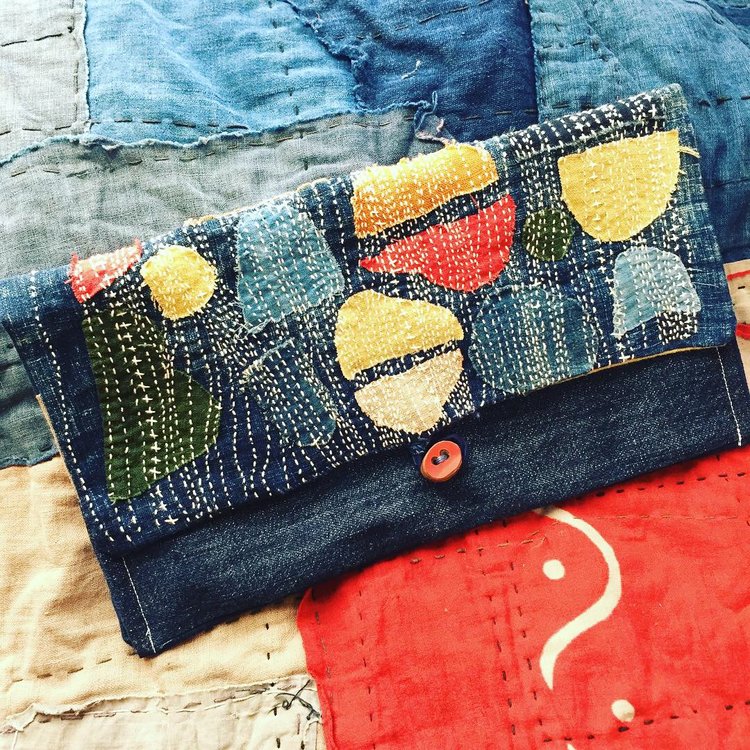
Lindsay says, ‘Hand-stitching for me is the perfect marriage of a lot of what I hold dear. Through making my own clothes I came across the concept of slow fashion and mending. Moreover, living in Japan, I am inspired by Sashiko stitching, boro fabric, and the concept of “mottainai” or “waste nothing”. In a fast fashion world, hand stitching is my own personal revolt. My work takes time, and that is ok. My work is made from second hand or recycled materials. And that is ok, too, because I don’t want to contribute to any more detritus in the world.’

‘Through my work I aim to take seemingly worthless things, especially textiles, and transform them into small tokens of beauty that can be enjoyed in everyday life.’
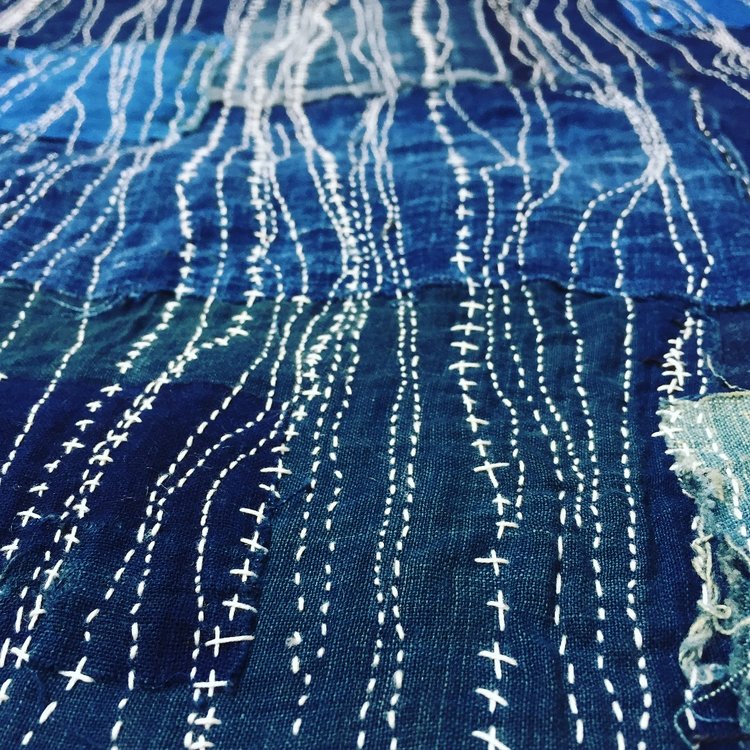
Tessa Perlow is one of the first second hand upcycling and motif influences on Lindsay.
Lindsay suggests that new starters should use what they have at hand. Machine thread is what she uses. The important thing is to start!
You’ll find Lindsay on Instagram and on her website.
Friday 4 December 2020: Katrine shares her mending knowledge and a special Christmas mending story.

Did you know crochet can be used as a mending technique?
I use it quite often. It can also be used to alter and mend clothes.

You can darn socks by using crochet. It’s easy if you already know how to crochet. I use single crochet stitch around the edges of the hole and keep working with this single crochet stitch into the middle until the hole is closed. That’s how easy it is.

You can do the same to crochet to close a hole too. If it’s not a knitted item such as socks, you might need to create a base for your crochet. You can use running stitches or blanket stitch. I prefer to use a running stitch along the edge as doesn’t show when you’ve finished your mending.
Crochet panel ideas
I have used this technique to create panels in clothes. One example was when I mended a sweater that I bought and it was much too short.
What I did was I cut it in the in two pieces and then crochet a panel and it now fit me better. You can crochet by either working back and forth or by crocheting go around each panel piece.

Once you’ve done this, attach both pieces as you go or join them in the middle. This middle join then becomes a lovely feature.
You can choose to create panels in the side as well. To do this you cut or unpick open up the side seams and create a base of running stitch. Use contrasting colours to create visible mend feature.
I have altered a few sweaters this way and I also made a jacket out of a hoodie.

My most fun alteration was a pair of ugly crocs that I covered with crochet.
And they turned into cool slippers with flowers. These are now lovely to look at too.

For more crochet hack inspiration check out Emma’s account @steelandstitch Emma has even wrote a book about crochet Books | steel and stitch
Where I love to use crochet

As I seem to have longer arms than the ‘average’ mender I often make the sleeves longer by adding a little crochet feature to them.


You can also make crochet motifs and use them as patches. I like to also use small crochet flowers to cover small stains or holes.

Like the ones used for one of my favourite tops

I made a pattern for this on the Mending Mayhem blog.

Granny Squares also makes great patches.
And you can crochet together several to make bigger patches. These are also great if you have some left-over yarn you want to use and don’t want to waste. I also make other small motifs or doilies and use them as patches. Remember to choose a yarn that will work well with your fabric, because if you choose one that is too bulky or it might be too heavy for your fabric, and it will not look good. It won’t blend into your garment, unless you are aiming to have a mend that is very, very visible.

I think crochet patches fit well with jeans. They stand out really well.
I used a variegated cotton thread to crochet some granny squares to cover up some paint stains on Hilma’s jeans.
As I said earlier, you can make bigger patches by joining them together. I made a bigger patch out of 6 granny squares.
There is a jeans jacket I bought second-hand. I made a crochet panel in the sides as it was a bit too small for me but I loved this jacket so much. I planned to add some embroidery on the back of this jeans jacket, but haven’t gotten around to do it as yet.
If you don’t know how to crochet, you can often find crochet doilies in the second hand store and use those to create beautiful visible mends.




Here is my Christmas table cloth story
Here is a little Christmas inspired mending for the December episode of @seworganisedstyle podcast.
I have this huge Christmas tablecloth. My mother-in-law started embroidering it together with her husband. They did not finish their embroidery, and she passed it on to me, so I could finish it.
This was way back when I was in my early twenties.
Unfortunately there was a needle that was left in the embroidery of this tablecloth. The needle had rusted an was stuck in the middle of the table loth. So I couldn’t get it out without making a hole in the tablecloth. I can’t remember exactly how this happened but the area around the needle was also damaged. Maybe the needle was pulled through the fabric several times? And it grew bigger as I was embroidering. Why didn’t I think about fixing the hole when I first saw it?
It was of course very annoying to me because I then had spent so much time sewing it.
And I got all family members to embroidery a star each.
So after all of their efforts I thought to myself that ‘I must fix it’.

I wasn’t as experienced with mending back then as I am today.
And I used an under patch and darned it with the sewing machine 🙊 I did not have a similar thread at the time, and I sewed over this hole too many times. It really is not very pretty. I wish I had asked my Mum to help me out back then. But this mending kept this hole from growing larger and this has kept the tablecloth together for ever since.
I have recently covered that ugly darn with a crochet doily and a Christmas flower.

Every year when I used to iron this Christmas tablecloth and used to think ‘oh bugger I forgot to fix this ugly darn’. But right now I don’t have the time to fix this tablecloth……. So I’ll do it next year.
So I said to Maria @velosews I’ll make do this mend for the December podcast.
I must say I do regret it 🤣🤣🤣
This mend has given me a lot of trouble, and headaches.
First off all I had to remove my old darning, and this wasn’t easy to do. As I had to try to not have the fabric fray even more around the hole. But this stage of the darn worked out pretty well.
I then thought to try to darn the holes to look pretty by hand darning or maybe cut out the damaged area and put a crochet doily in the middle.
I was trying to find a thread to match the linen fabric, but after been through my entire stash, which is actually more like a craft store, I couldn’t find any. I tried with the closest thread I could find, but I didn’t like how it turned out.
Next I tried to find linen fabric that was somewhat similar to the one in the table cloth. Again, no such luck either. Yes. I even tried to bleach one linen piece to see if it was a better match with this tablecloth.
I kept searching through my other tablecloths to try to find something that could work out. But no, nothing matched up with this one.
Then I tried to find a crochet doily that could fit this hole in the tablecloth.
Either the ones I had were too big or wasn’t good enough for a centre piece of this tablecloth.
I looked through my local second-hand shops, no luck there either….
I had given up on finding something that would work the way I had thought. Deciding to crochet a piece myself. And I started a piece. But I’m not really happy with the pattern I chose.
I spent most of November trying to get something to work with the tablecloth mend. Thinking I just had to say to Maria I couldn’t fix it. Or I just had to go with a patch that didn’t fit and just trying to embroidery over it to cover up it didn’t fit. I really wanted this to be as invisible as possible.
But then looking for something else in the second-hand store, I stumbled upon a tiny tablecloth with a close colour and a little embroidery that I thought would work.
It was the best match I had found, so I went with it!

First I made a paper piece checking where it was placed, and how big this darn needed to be.
There was no room for mistakes, as I only had the one small tablecloth to use.
Then I cut the patch using the paper template. Zigzagging around the edges.
Flooded in the edges as I don’t want the rest of the holes to fray more I used thermofix. It’s a backing with glue on both sides. Often I use this in applique. You iron it on. When my patch was in place I topstitch the patch. And now my large tablecloth is finally ready for Christmas.

It just took me almost 30 years to get it done properly…
After I was done I got an explanation from my friend why it was so difficult to find a matching fabric or thread for the table cloth. She told me that they often used flour sacks to embroidery on quite some time after the second World War.
I think that might be the case, my husband can still remember his mum embroidery on it just before Christmas. He said he think it was passed on to her from someone, and she might had started it before he was born.
I’m very pleased I finally managed to get this done. All thanks to Maria and sew organised style podcast

Friday 13 November 2020: This month’s mending guest for Mending Mayhem is Selina. It is a bit silly how I created the name: everything was taken for Selina, so I added “am” (Amsterdam); it was also taken, at the end I added “05” because 5 is my favourite number😉
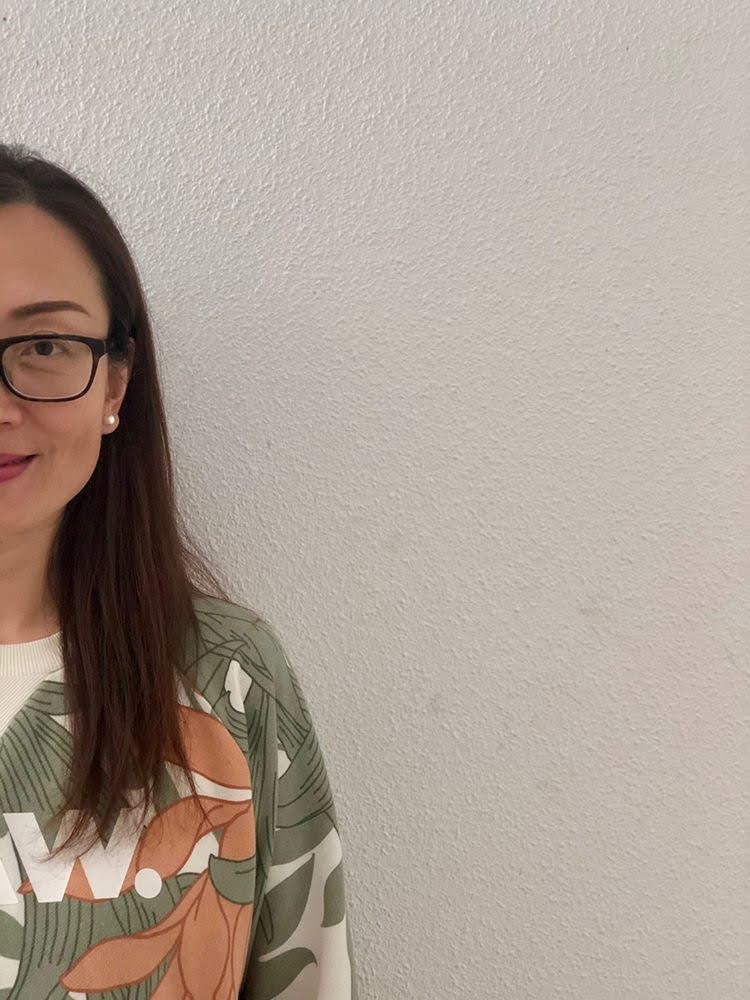
Selina is self taught and now creates her own repeatable designs. It was during the lockdown in April, when she finally had more time on her hands and she started to pick up the parked crafting skills. With old pillows and scrap fabrics, she hand stitched a denim poef. Inspired by the gorgeous works from @lindezeanne, Selina made many boro brooches. And after getting to know Sashiko from the Youtube channel of @sashi.co and the book “The Ultimate Sashiko Source Book” written by Susan Briscoe, Selina settled with Sashiko because the stitching process always calms her down and brings her focus back.


Selina from @selinaam05 enjoys sharing traditional Sashiko knowledge with her geometric animal designs. Selina’sfirst design is a cat repeat pattern which remains her personal favourite. The designing process was so much fun that before she realized, Selina had designed 17 animal patterns in less than 4 months. Selina has most samplers on her instagram account.
Later she also invented negative space Sashiko technique and exercised many traditional Sashiko patterns in Susan’s book .
I started to design new Sashiko patterns somewhere in June when I was searching for cute animal patterns to stitch on the bib for my friend’s newborn baby, but could not find anything.

In addition to Sashiko, Selina also loves mending. Mending is a part of the path for more sustainable living. Working as a textile product developer for many years, Selina is strongly against throwing away textiles as she knows exactly how much effort and energy it takes to produce a single piece of textile item. Her goal of mending is to retain the original character of the item as much as possible and keep the mend subtle. Selina’s favorite mend is done on the collar and cuffs of a white shirt. Although the mend is visible

She found inspiration from Lindsay @lindzeanne who is a very talented textile artist living in Japan.
Selina’s background:
Selina is a textile product developer living in Amsterdam with her husband, son and two cats. She loves handcraft, Sashiko pattern design and visible mending.
She moved to Amsterdam from China to study some time ago. During her study she started an internship at a fashion agency, who later arranged a technical immigrant working permit for Selina. Since then Selina started her new journey in the Netherlands.
Selina grew up in China in the 80’s when most home textiles were still hand sewn. She learnt hand stitching from her grandma, a hardworking farm lady who made quilts and winter clothes by hand for the whole family. Just imagine how much work it was since she has 8 children! As a child, Selina was always busy with drawing, cutting paper, sewing scrap fabrics and creating fancy hairstyles for my sister. She made small gifts and cards for friends’ birthdays. But somehow Selina stopped crafting due to the busy schedule of study, and later of work and family life.
Friday 6 November 2020: Katrine of Mending Mayhem discusses 4 mending techniques and refers to great menders across the globe.

Friday 23 October 2020: You’ll find Uli or schneckstein creating amazing mending on an amazing array of textiles. Uli lives in Kunststopfen, Kassel in Germany where she creates visible mends with such beauty. Uli has been featured in the Wednesday collage posted by Mending Mayhem’s Katrine.Uli shares her love and creativity of mending with us
Uli uses embroidery, crotchet and weaving techniques to embellish that various mends she accomplishes each week.
Her love of mending began when she was 4 years old and her mother taught her the importance of making sure you buy good quality goods and extend their life through mending.
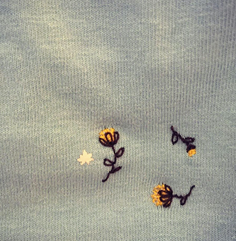
Elegant flowers 
embroidered cats 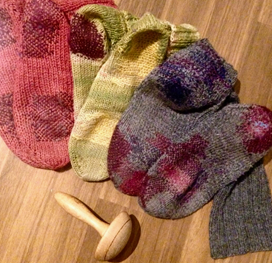
Socks that live forever
Her eye for design influences her mending ideas and her children help her decide on the mend idea to pursue. They play a game to image what a hole to be mended looks like. The first one Uli mentioned was hand sewn into an elephant. And the fun of deciding how a mend should look like has continued.
Uli’s creativity makes each visible mend unique and easy on the eyes. It’s when you look at the detailing that you then start to appreciate her mending artistry. Uli follows other great menders like Mending Mayhem, Marlen @milli_and_the_bee, Mending kate
Friday 15 October 2020: Sue Stoney, the creator of the Sewing Save Series has a few more sewing saves that she shares with us today. The first one is all about her first Gyo top and the lengths she went to saving it.

She initially spoke about her Flint shorts and what she did to save them for another Summer season. Go to Sue’s post with all the specific save details she discussed in this podcast.

Friday 9 October 2020: Katrine of Mending Mayhem provides her tips for buying second hand notions and fabric. You’ll save money and lessen the impact on the environment.

All threads are not equal 
Whale bone crotchet hook 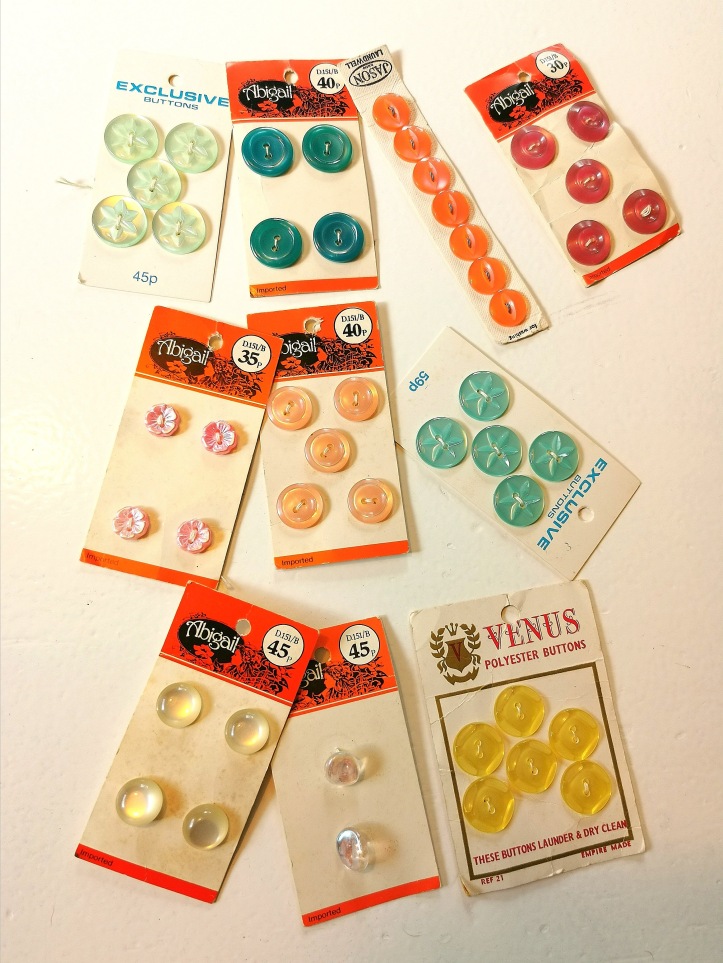
Vintage buttons

Sewing boxes 
Trims and tools
Friday 18 September 2020: Mending Mayhem is back from their Summer break. Katrine discusses this week’s visible mending collage and the basics of mending.

Use our #mendingmayhem and your mending have a chance to be featured next week.
Here are the Mending Mayhemmers for 16 September 2020:
🧵@lorenz.cherry for amazing and well done tapestry circle on the back of a coat 🧥 ⭕❤️
🧵@judymerrillsmith for a much patched hoodie, it’s just gorgeous Judy 💕 😍
🧵@dithyramber for making waves with a sailboat ⛵ mend on jeans 👖 it’s such a brilliant mend Heather 👏 ❤️
🧵@eseartstudio Eric always comes up with creative solutions. We just love the dragonfly keeping your much loved hat together 🎩❤️
🧵@ruthannsmalley mending the back of a denim shirt 👚 with a gorgeous dandelion ❤️nice stitching Ruth 👌❤️
🧵@swoodsonsays despite her love for patches Stephanie went for a embroidery mend this time. We love your flower 🌸, good choice 👏❤️
🧵@alexonver for very colourful and fresh darning denim 🌈❤️you work with the darning loom is amazing Alex 👌
🧵@schneckstein Uli are impressing us with her beautiful bike 🚲 mend on socks 🧦 ❤️
Well done everyone 🎉💫🎉
Thank you all for using our #mendingmayhem and for contributing to the mending community ❤️
Keep up the good work.
Hope over to the Mending Mayhem podcast post for great darning information.
Friday 11 September 2020: September has many sustainability challenges on Instagram and Illaria or Ilaasiam is an Australian local that has a sustainability hashtag you might want to learn more about #sustainablestylesept.

Tricia of Morrissews is currently ensuring we all know the variety of sustainability challenges that are happening right now with her daily IG posts such as #septtextilelove
@seam_collective #sewsustainablefabric #sewsustainablefabric #sustainablestylesept
#secondhandseptember

Tricia was on the podcast in August for Sewover50 Thursday podcast, talking about her sustainable approach to sewing.

Make sure you follow #sewyourselfsustainable by @newcrafthouse You’re doing a splendid job each day Hannah and Rosie with your daily sustainable prompts.

Friday 4 September 2020: On the Sewing Save Series, Margot is back talking us about her coat save which is now owned and proudly worn by her niece. The coat using wool with with silver fleck and alpaca is 70 years old.

The coat is over 70 years old. The buttons were purchased from Harrods when there was a haberdashery department when she was visiting the UK in the 70s and the new lining was purchased online this year.
She’s also given us her technique to refresh the coat fabric without ruining it.

Lining pieces and those amazing buttons from Harrods 
Buttonholes hand sewn as part of attaching the lining 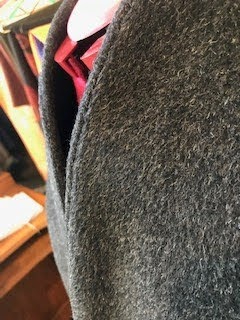
Collar fell stitching close up Saved coat with new lining.
Check out the trim using lining
The coat in pieces to be saved after sitting in a box for 40 years
Sewing Save Series: Katrine and Suzie are the Mending mayhem team. Mending is part of their daily lives and not just mending clothes. Mending is done with love.
Sewing Save Series: Part 2 with Katrine and Suzie is about mending and cherishing memories. The mending examples that Katrine and Suzie discussed in part 2, clearly link mending to wonderful memories. Making sure we avoid adding to landfill is top of mind when mending but the mending driving force for Katrine and Suzie is all about saving wonderful memories.
Every item has more than one life and mending is an everyday part of their lives.
Every item has more than one life and mending is an everyday part of their lives. You don’t have to be skilled to mend and if you’re thinking of starting have a look at Mending mayhem.
Sewing Save Series 14 August 2020: This week Des talks about her joy in creating a christening dress from a bridal gown. That catch was that the bridal gown was supposed to be kept for future use by the next generations. Hear how she made this work.
Sewing Save Series Friday 7 August 2020: Des is most happiest with a needle in her hands. You’ll hear how her sewing journey began and understand why sewing brings her joy.
Here’s a link to Des’s website and her instagram account.
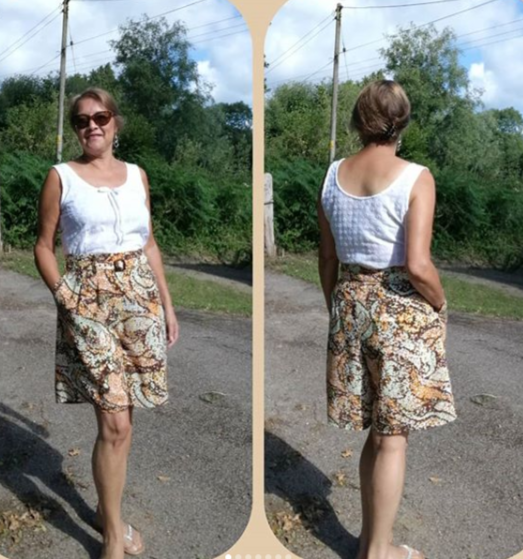
Des is able to sew great projects through saving garments and furniture. You’ll find out how Des does this in her contribution to the Sewing Save Series.

That dress 
Back piecing 
Front piecing 
Heirloom buckle and belt rings

Series 3, Episode 2: Sue is back to tell us about how she saved a vintage linen table cloth. Sue is an avid op shopper and saving or reusing existing items are her speciality. You can read her blog post about more linen refashions too.

Sue shares her natural dyeing methods and her proven process for bringing vintage pieces back to a more useful life.
Series 3, Episode 1: Sue Stoney is a creative crafter and is an educator, hence we’re excited for Sue to start this series where you can get to share your sewing saves with our listeners.
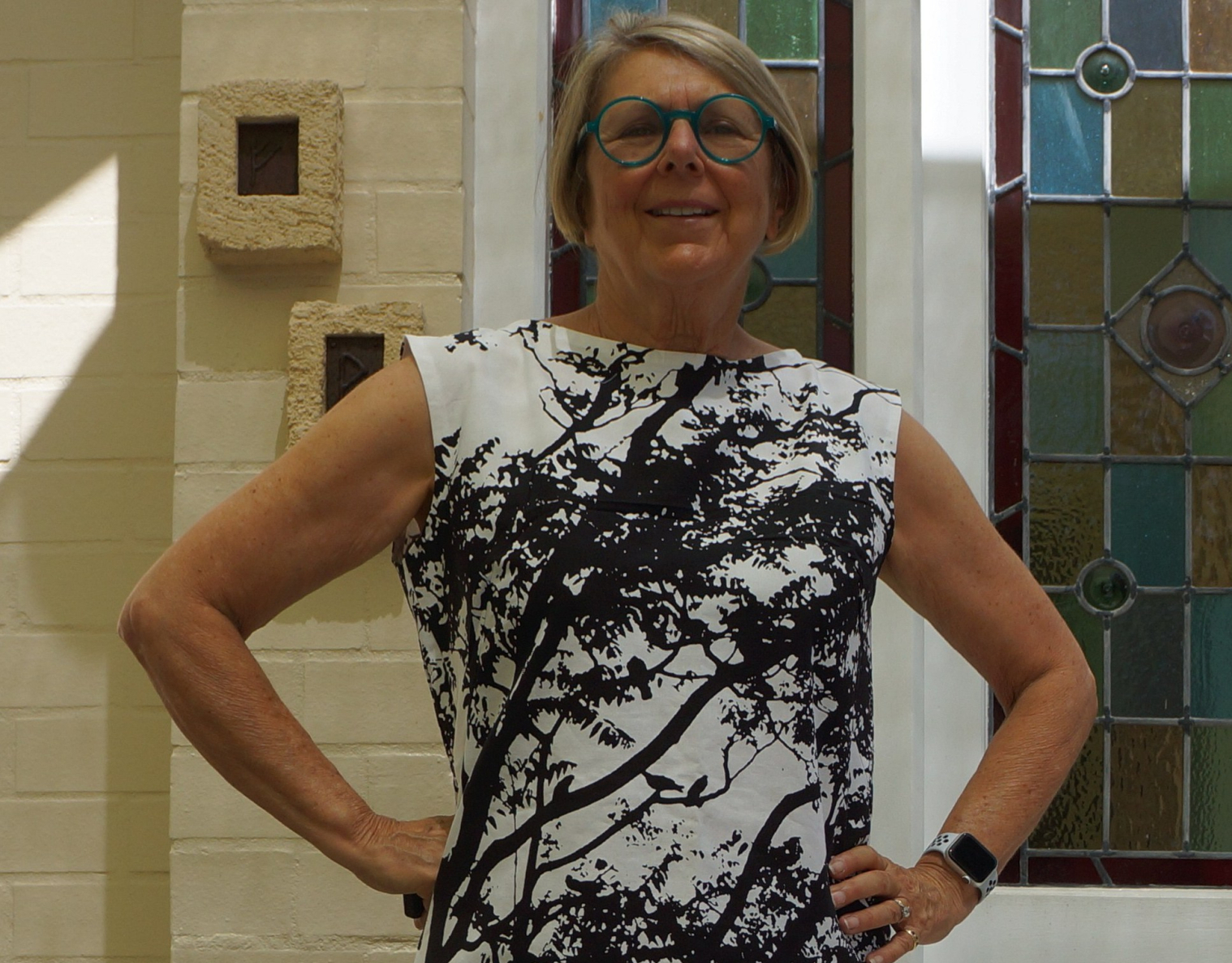
Like many of us, Sue loves remnants and using pre-loved items. The dilemma is remnant fabrics are often too small for what you thought they could become. Each episode Sue will give us the back story behind each project/s.
What you will get out of these sessions is you can ask Sue for her ideas of how to make your remnant work for you.
You can contact us on our instagram account, facebook account or on this website.
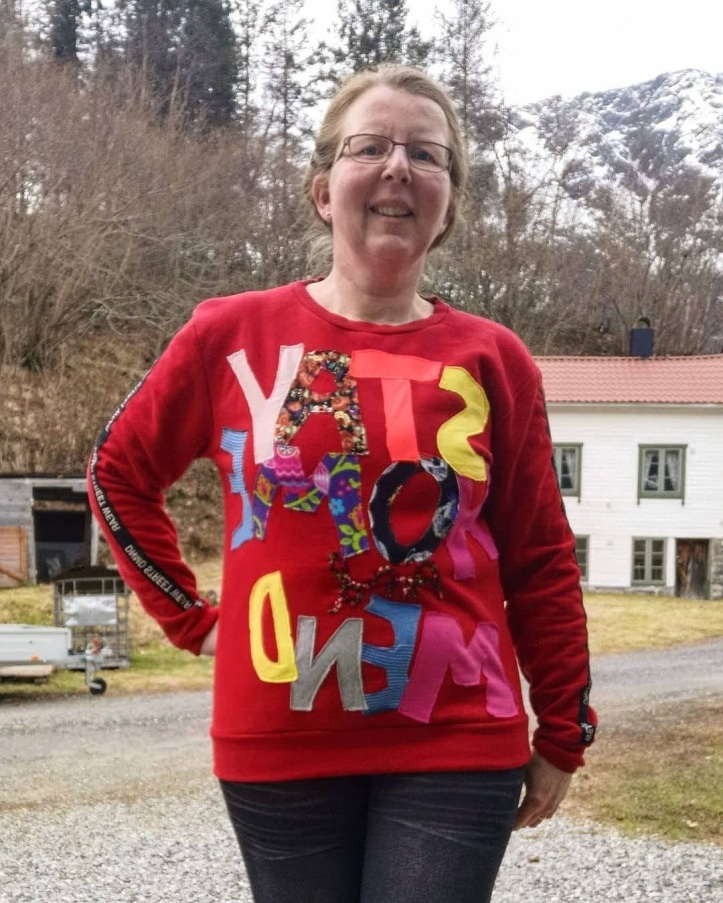

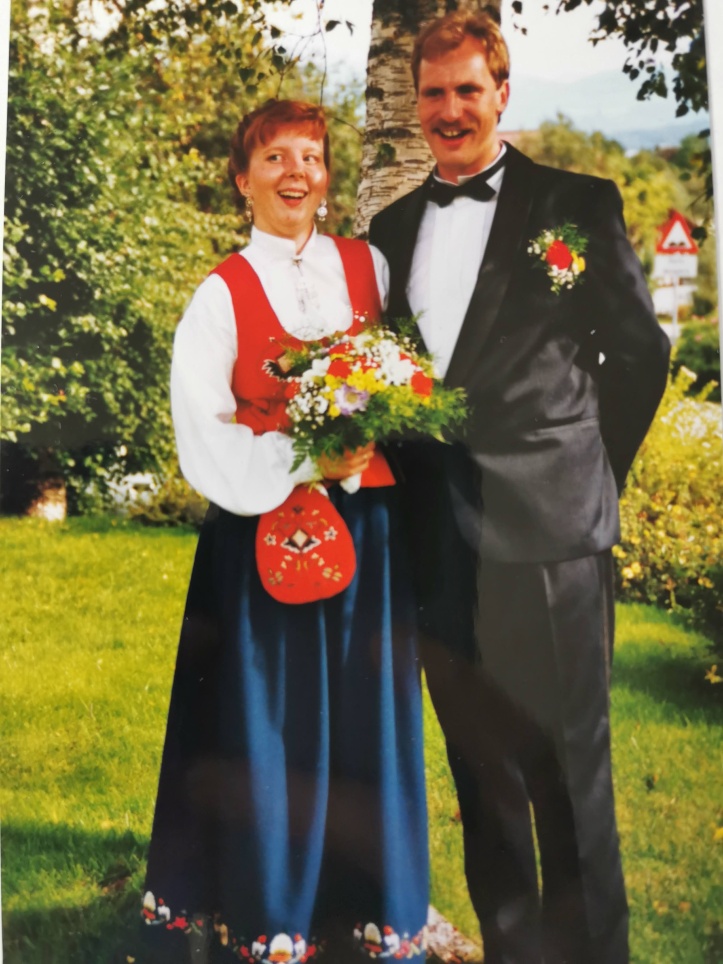
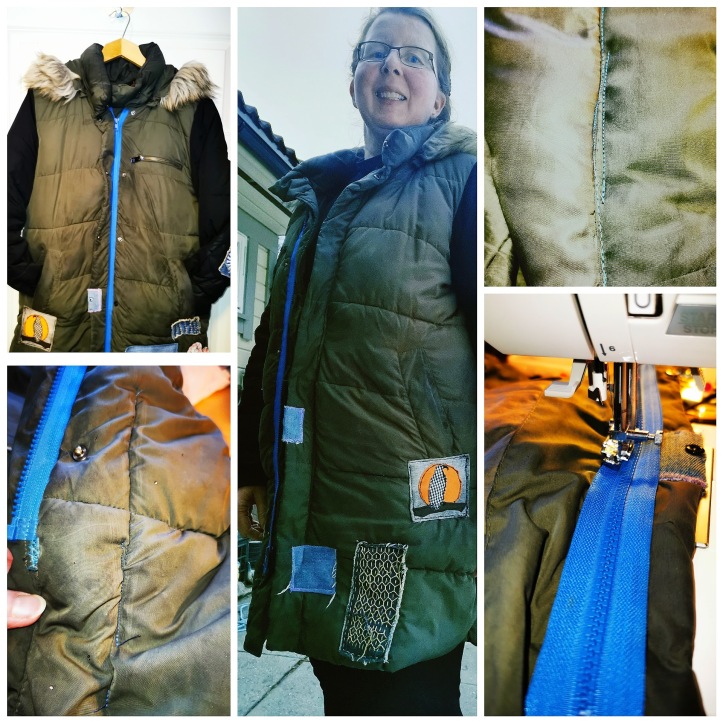

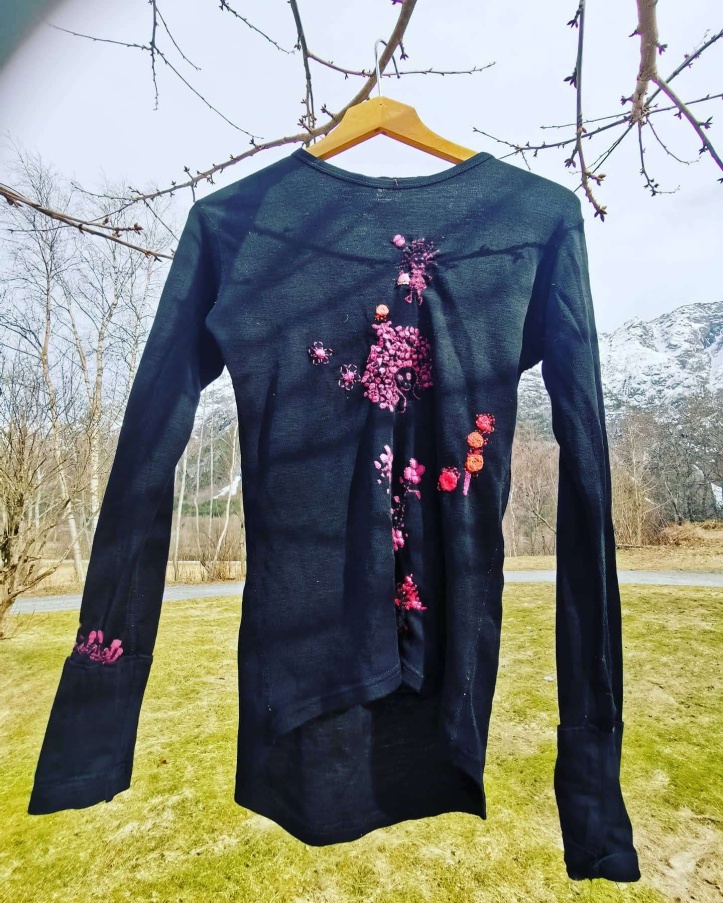








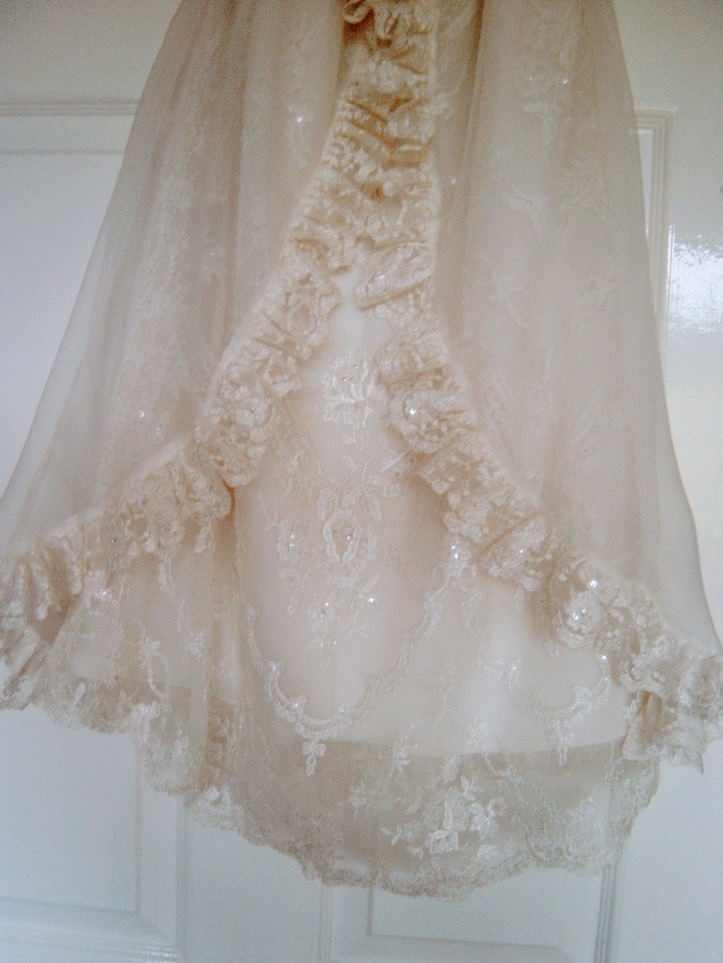

[…] get to share your sewing saves with our listeners. Make sure you listen to this new series – Sewing Save Series – led by […]
LikeLike
I love how you’re developing the podcast: your focussed series’ are great. And the first two instalments of this sewing-saves one were lots of fun! I so much enjoy welcoming sewists of good heart, such as Sue Stoney, into my home.
LikeLike
That’s lovely to hear Kaz. If you have any sewing saves, I’d love to have you on the podcast.
LikeLike
* installments
LikeLike